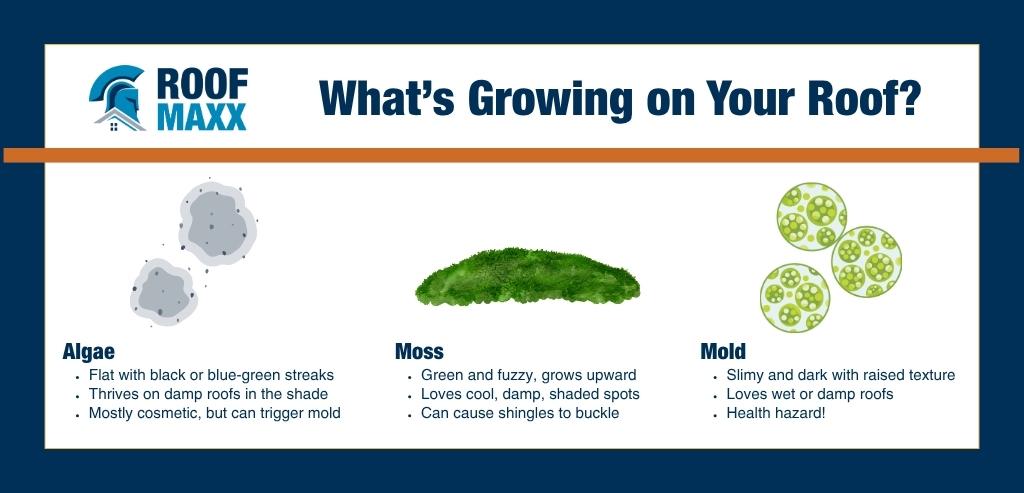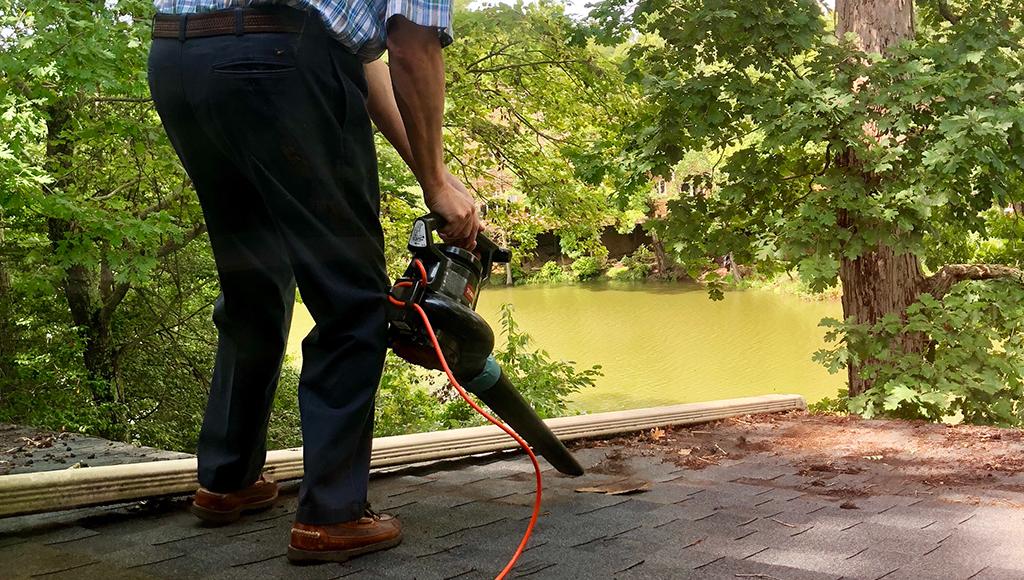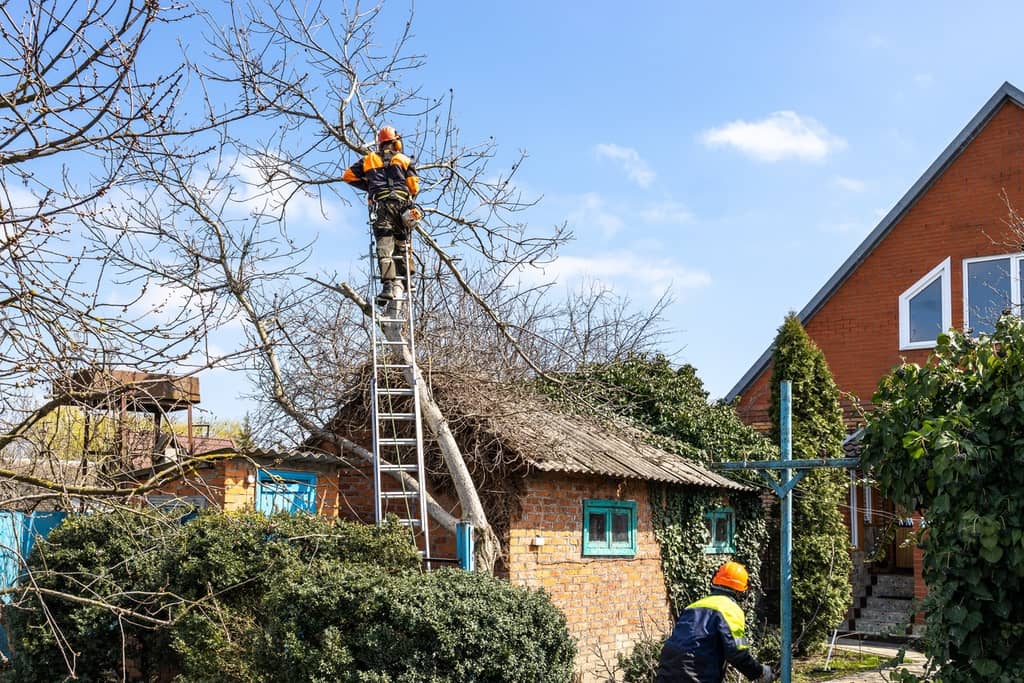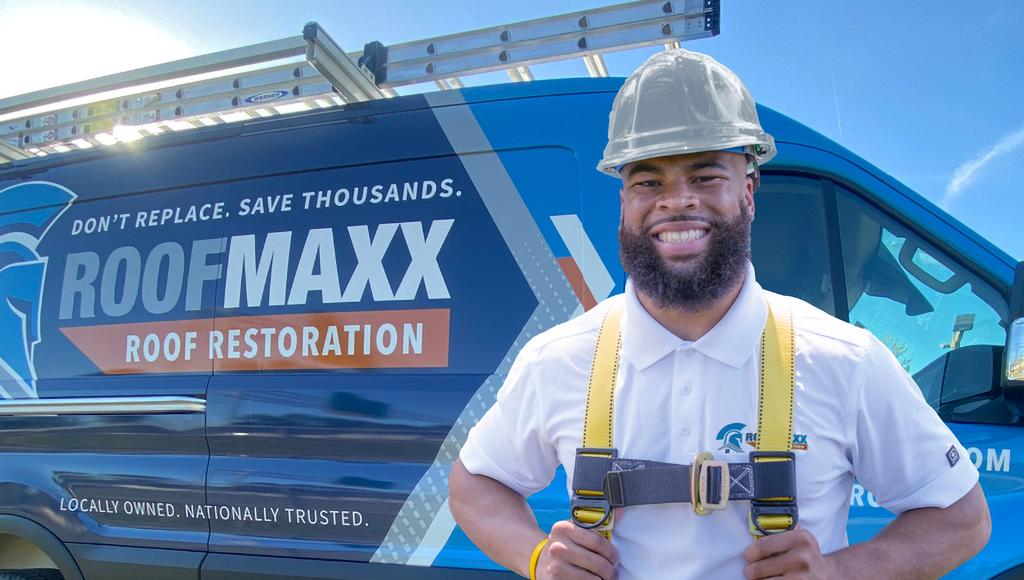Algae, moss, and mold often form on asphalt shingles in humid areas. Algae leaves dark streaks, moss appears as green clumps, and mold is slimy and hazardous. Remove with a roof-safe cleaner or diluted bleach, but never use a pressure washer. Prevent regrowth by trimming trees, fixing leaks, clearing gutters, and adding zinc or copper strips. Annual assessments and treatments like Roof Maxx help maintain shingle health and extend roof life.
| Time to Read |
|
| What You’ll Learn |
|
| Next Steps |
|
If you live in the South, Midwest, or any other region with warm, humid summers, you may notice stains or streaks on your asphalt shingles. The most common cause is blue-green algae, mold, and moss, which can grow on the surface of your roof in the right conditions.
Knowing the difference between mold, moss, and algae makes it easier to recognize and remove each offender before they can cause harm. Moss can damage your roof, algae is an eyesore, and mold is a health hazard that can cause asthma and headaches.
Below, you’ll learn how to identify what’s growing on your roof, how to remove them, and how Roof Maxx can help stop them from coming back.
Roof Maxx’s plant-based roof restoration solution contains a natural fungicide. It won’t remove existing growths if you have them, but it can prevent them from setting up shop again once they’re gone.
You’ll just need to make sure you clean these growths from your rooftop before your Roof Maxx treatment is scheduled, since it won’t kill any that already exist. We recommend booking a service to have your roof cleaned before the day of your Roof Maxx procedure.

Algae, moss, and mold are easy to mix up if you don’t know the specific signs for each one. Use the diagram above to quickly identify them, then learn more about them below.
Moss tends to grow upright while algae remain flat against the surface. So, if you notice dark streaks on the roof, it’s likely algae rather than moss or mold.
Algae is really common in the United States. It typically starts out as airborne spores transported by wind, birds, or vermin before settling on your roof.
Here’s what you need to know about it:
Algae and moss both thrive in damp and shaded areas. But while moss can directly harm the physical structure of your roof by lifting shingles and retaining moisture, algae is mostly cosmetic. What makes it such a problem is the fact that it can lead to mold over time.
If you notice a green fuzzy growth on your roof, it is most likely moss.
Moss loves cool, damp environments. Like algae, it most commonly develops on the northern slope of the roof, but can also grow beneath overhanging trees or overhangs. The shade allows moisture to build up and create favorable growing conditions.
Here’s what you need to know about it:
A small amount of moss is relatively harmless, but it can spread and eventually damage your asphalt shingles if it’s left unattended. Removing it will help prevent structural damage.
Mold is the result of algae left too long on a roof. Algae need perpetual moisture to exist, which is why they grow so well in humid areas. This is a big problem because dampness leads to rot, which creates the perfect breeding ground for it to spread to your windows, doors, and interior.
Here’s what you need to know about it:
We don’t recommend trying DIY mold removal because breathing in mold spores can be hazardous to your health. It’s better to follow the step-by-step guide below to tackle moss and algae before mold growth can occur.

To reemphasize, we don’t recommend trying to handle major mold growth by yourself. It’s difficult and potentially dangerous, so it’s better to hire a professional to do the work for you.
If you’re a handy person who is capable of climbing a ladder or your roof safely, you may be able to tackle algae or moss removal yourself. There are also a few methods that involve less risk.
If you decide to remove growths from your roof on your own, here are some tips:
The safest method for your roof and the environment is to use a product called Spray and Forget or Wet and Forget. These products can be purchased at most local hardware stores, put into a hose-end sprayer, and applied from a ladder at the edge of the gutter.
Products like these take around 3-6 months to work, but they are the safest and easiest to apply. Take some time to research these products before use.
For quicker results with ingredients you have at home, you can try a mixture of water and bleach.
Below are the general steps for this method:
Take precautions with this method, since this mixture can run off your roof and into your garden below. Before you spray, cover any plants you wish to protect and rinse down everything this solution may come in contact with.
If your roof is densely covered in moss, it might take a bit more work to remove it. A handheld deck brush or push broom with a soft synthetic nylon head can help loosen it up, but you don’t want to scrub so hard that you’re removing tons of granules in the process.
You can also use a leaf blower to get rid of loose growth afterward. Never blow up against the bottom edge of the shingles, as this can break the seal tabs or even shear them off. Focus the direction from the peak down toward the gutter.
Remember: getting on top of your roof is risky, so it’s better to prevent these substances from growing in the first place or hire professional help if you need them removed.

Roof algae and moss usually grow because of moisture and bacterial growth. If you stop that growth from ever starting in the first place, you can help your roof last longer.
Here are a few ways to prevent future growth once you have gotten rid of moss and algae:
In addition to dealing with unwanted growths, there are a few other great ways to keep the roof above your head healthy and structurally sound.
Here are the top 3:
Keep in mind that treating your shingles with Roof Maxx is a great way to keep them durable and flexible. When they can flex and bend, they’re better able to deal with the weather.

For a roof inspection you can trust and another way to extend the life of your roof, contact us at Roof Maxx. We’ll apply our sustainable, affordable treatment, which can add up to 15 years to the life of your roof with repeat applications once every 5 years.
With our help, you can prevent new algae, moss, and mold from growing on your asphalt shingles, while restoring their condition and extending their lifespan for years to come. Find a Roof Maxx dealer near you today!
In most cases, no. The problem is that simple surface growth almost always turns into a more serious problem over time. Mold can eventually lead to the need for a full replacement.
Signs that your roof may need replacing include:
A professional inspection is the best way to confirm whether cleaning or replacement makes more sense.
Yes, and when they do, the damage can be catastrophic. Mold spores can migrate through the ventilation system or your windows and settle in or near any organic material (like wood). We recommend inspecting these areas regularly so you don’t miss any early growth, should it happen.
Yes. Metal, slate, and certain synthetic shingles resist algae and moss far better than standard asphalt, but they’re very expensive to buy and install.
Some shingle manufacturers are now using copper or zinc granules in their asphalt to help ward off growth. Roof Maxx can also help make your shingles inhospitable to all 3 organisms.
With our five-year, transferable warranty, you’ll enjoy the peace of mind that your roof and entire home are protected.